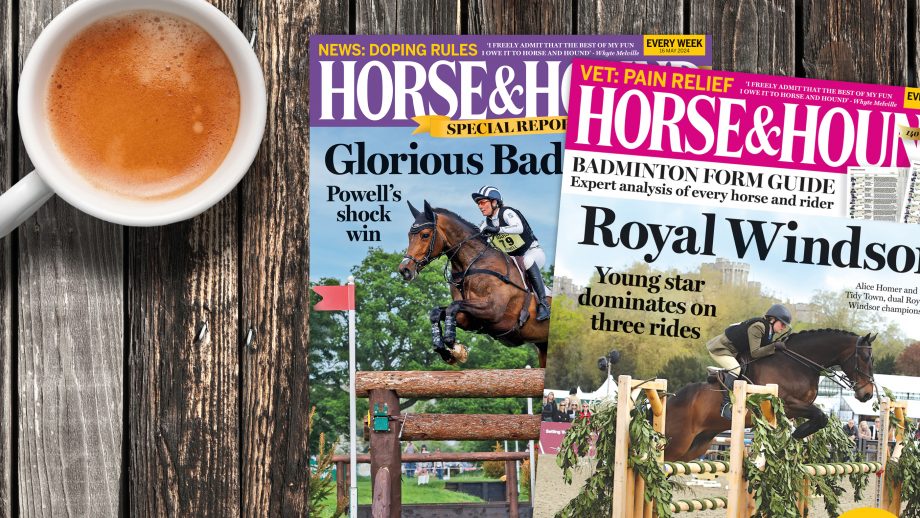With simply two cues, you’ll be able to create a framework for studying liberty work that your horse will perceive and revel in. With an increasing number of riders making an introduction to liberty coaching alongside their work within the saddle, you is perhaps interested by including liberty workouts to your horse’s day-to-day routine.
Liberty coaching means various things to completely different trainers, however broadly talking it encompasses something a coach does with their horse free from restraint, with no ropes, tack or coaching aids past cues or an extended whip as a information.
For professional free rider and liberty coach Emma Massingale, liberty coaching’s scope is far-reaching.
“Most individuals do types of liberty with their horse each day with out realising,” she explains. “If they’ll select their ft, squash bothersome flies or brush them with out tying them up, that’s the proof their horse is on board and with them.”
Should you’ve began making progress with newbie liberty work or really feel that your horse would profit from working on this approach, learn on for Emma’s easy workouts that can begin you in your journey.
Introduction to liberty coaching
Educating newbie cues
Emma is adept at cultivating a partnership together with her horses in a state of freedom. Nevertheless, handlers can solely obtain this by first understanding tips on how to get a horse to pay attention, which includes harnessing their horse’s skill to study patterns.
“Many horses solely have their headcollar and leadrope taken off when their homeowners allow them to go within the discipline, they usually study via repetition that that is once they’re free to run away and graze,” says Emma.
“This technique completely units a horse as much as study that working away from you equals enjoyable, which makes liberty coaching workouts actually onerous to work on!”
If each time you take away the headcollar, the horse expects to gallop freely spherical his paddock, that is his realized expertise of liberty. Credit score: Alamy
She provides: “What we are able to do is use that very same repetitive studying to show them cues that make working at liberty, and a broader expertise of life off the headcollar and leadrope, doable.”
Emma explains that you simply don’t essentially should be certain of your horse’s undivided consideration earlier than you begin newbie liberty work. In reality, instructing two foundational cues is a good way to start cultivating the togetherness required for profitable liberty work.
“It’s comparable with coaching canines, and even clicker coaching,” explains Emma. “It’s about marking a exact second of fascinating behaviour with an acceptable reward.”
Educating the horse to search out the precise reply
Emma explains that horses who perceive once they’ve answered a query accurately change into extra engaged with their coaching.
“If you present them tips on how to perceive, ‘sure, that’s proper’, you’re additionally instructing them to search for the precise reply,” explains Emma. “To mark this second, I say ‘good’ or ‘sure’.”
However within the seek for the precise reply, the horse would possibly discover the fallacious one.
“So, I exploit sound, which implies no matter you’re doing is inaccurate,” she continues. “It’s by no means ‘no’, as a result of we’re not telling the horse off for making an attempt. That’ll simply kill his need to attempt.
“As a substitute, I exploit a fast ‘shh’ noise to say, ‘nearly’. I recognise that he tried. Now, I need him to attempt one thing else.”
When horses are studying a brand new talent, it’s necessary to be choosy about while you mark the precise reply with “sure” in order that they study the precise sample.
“Alongside the vocal cue of ‘good’ or ‘sure’, I additionally use a high-value reward, corresponding to a carrot, once they get it proper for the primary time,” Emma provides. “It’s about paying them pretty for the hassle. Down the road, a scratch on the wither is perhaps sufficient, however when they’re first studying, they want one thing extra.”

A high-value reward corresponding to a carrot is acceptable when a horse has realized a brand new process. Credit score: Alamy
Put it into observe
The ideas of “sure” and “nearly” may be taught alongside any new talent, be it instructing your horse to halt at your shoulder each time you cease, again up or transfer quarters away.
Necessary takeaways are solely to reward when the behaviour supplied is spot-on, and to reward nicely with a high-value deal with the primary time your horse will get it proper.
In case your horse loses curiosity within the session when the reward turns into a scratch on the wither, you’ll be able to attempt lower-value treats corresponding to fibre nuts.
Hotter and colder
By utilizing “sure” and “nearly”, you’ll be able to create a cue-learning construction that resembles a recreation your horse will perceive and revel in. Plus, as soon as “sure” and “nearly” are realized cues, it is going to make instructing him new issues a lot simpler.
“It’s just like the ‘hotter, hotter, colder, colder’ looking for recreation that youngsters play,” says Emma. “You’re instructing the horse to go looking out the precise reply. As soon as they know this, instructing them one thing else turns into 10 instances simpler as a result of they’ve a construction for the training course of.”
“As soon as they know tips on how to study, you’ll be able to then train them many, many alternative issues.”

Emma Massingale with two ponies in a crusing boat. After getting established liberty coaching, the world’s your oyster. Credit score: Alamy
Did you take pleasure in this text? You might also prefer to learn…

Credit score: Barry Chester

Credit score: Alamy Inventory Photograph

Credit score: Andrew Sydenham


Credit score: Alamy Inventory Photograph

Credit score: Future








